20 kgs Of Honey Harvested!!
Hey everyone, bee-keeping really is rather exciting, last night after a month of letting our bees work, we inspected 2 of our hives to see what they had produced and to our dismay a nice surprise..
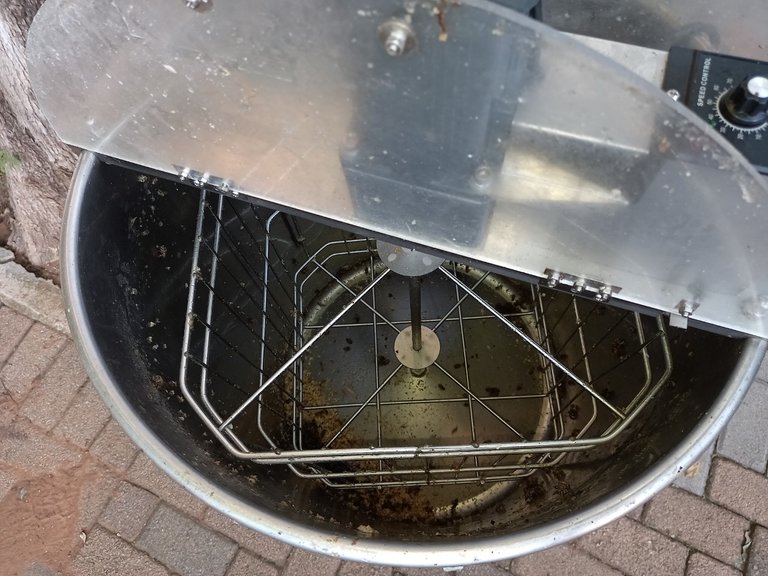
I had to clean out the honey spinner as it was full of residual honey and wax from our last harvest, so put it outside for the bees to forage what was left and assist me with the cleaning efforts!
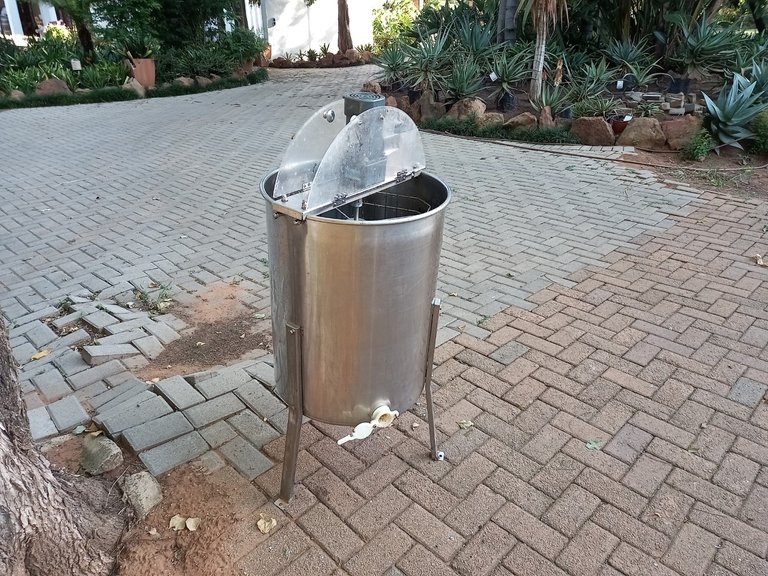
For a nice comprehensive run down as to how honey extractors work their origins etc do check out the info below as per www.wikipedia.org
History
Franz Hruschka in uniform
In 1838, Johann Dzierzon, a Polish Roman Catholic priest and beekeeper devised the first practical movable-comb beehive, allowing for the manipulation of individual honeycombs without destroying the structure of the hive. This idea was further developed by L. L. Langstroth, an American pastor and beekeeper in Philadelphia, Pennsylvania who patented his beehive design in 1852.[1] These frames were a major improvement over the old method of beekeeping using allowed tree trunks and skeps. However, no easy method had been found to easily extract the honey.
The extractor was invented in the summer of 1865, by Franz Hruschka, a former Officer in the Austrian Army who was by then a beekeeper in Italy. The exact date of the invention is not known but on July 1, 1865, he explained in an article in the Eichstraett Beekeeping News his old method of crushing method to extract honey. This article would have been written in May or June of that year. In September 1865, he makes the announcement at the Brno Beekeeper Conference of his new invention: the centrifuge extractor. The first model was built by Bollinger Manufacturer in Vienna, Austria.[2]
The first version was a simple tin box attached to a wire cord with a funnel at the bottom to which a glass was fastened to collect the honey. The extraction was however slow and required a lot of effort from the beekeeper. The second version used the same design but attached to an arm at the top of a tripod. Finally the final version resembled what we recognize today as an extractor with the familiar round tub.[2]
Here we have a nice pic of our 'honey room' with the settling tank, bottled honey and boxes full of boxed honey. The honey season really is such a blessing!
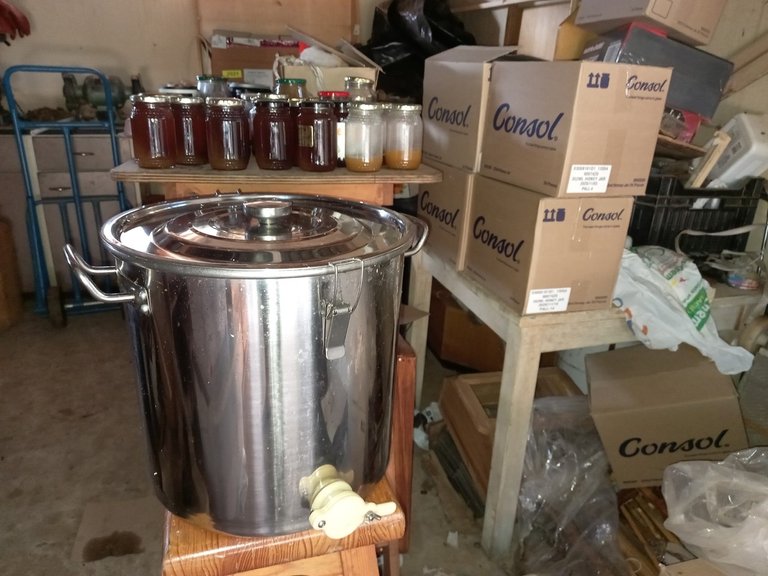
5 kgs of honey in the settling tank with wax residue on the top, it does not get more organic and fresh than this.
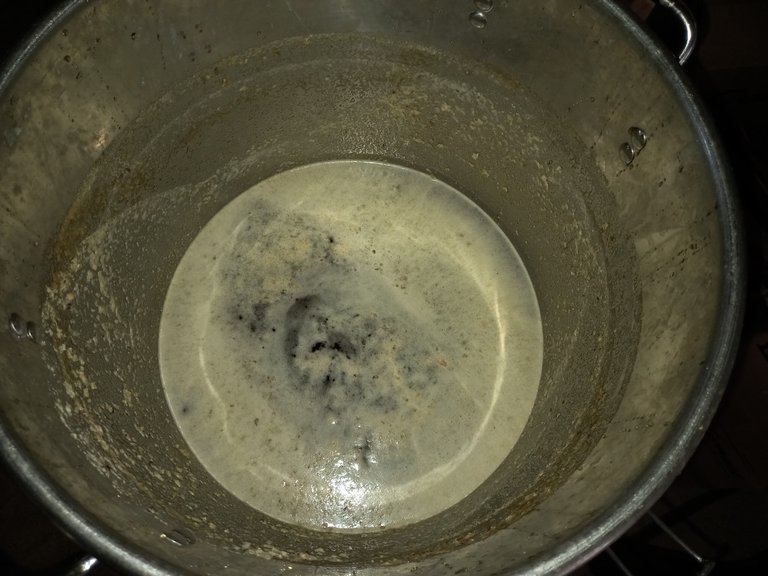
A gorgeous frame of capped mature honey!
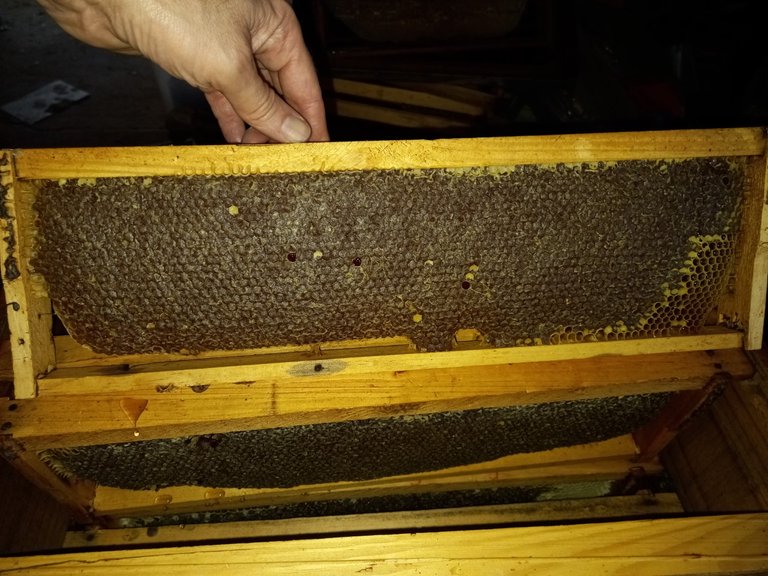
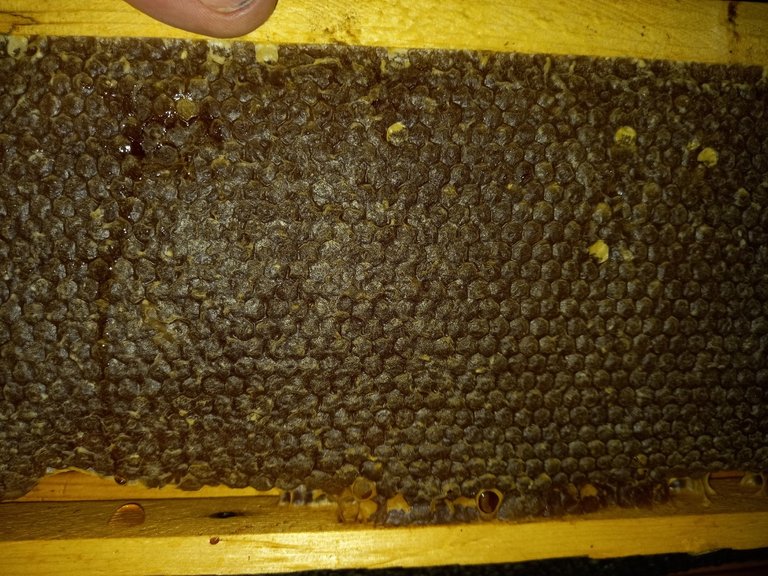
Types of Extractors
Extractors can be one of two kinds depending on how the frames are oriented in the basket:
tangential: one side of the comb facing outward
radial: the top bar of the frame facing outward[5]
Both rely on the use of centrifugal force to force the honey out of the cells. During the extraction process the honey is forced out of the uncapped wax cells, runs down the walls of the extractor and pools at the bottom. A tap or honey pump allows for the removal of honey from the extractor. Honey must be removed in time and always stay below the rotating frames as otherwise it prevents extractor from spinning with sufficient speed.
Extractors can vary in sizes from holding just a couple frames to large commercial ones holding up to sixty frames. The smaller ones can be powered manually while others (especially the commercial ones) will be powered by an electric motor. Most hand-cranked extractors will rely on a gearing system to increase the speed of the rotation of the frames.[5]
Most large commercial extractors are radial and rely on the upward slope of the comb cells.[5] When bees build their comb, the cells are sloped upward from the center rib at an angle of 10 to 14 degrees.[6] By leveraging this slope angle, it is easier to extract the honey.[5] In addition, the amount of work during extraction is reduced in the radial type because the frames do not have to be turned over to extract the honey from the other side of the comb (however some extractors are capable of turning combs automatically).
Some portable honey extractors are driven by gasoline or diesel small engines. Larger diesel engines are more expensive than a compact 2 stroke gasoline ones and usually use the diesel fuel to operate at lower rpms with higher torque. Diesel-powered extractors are harder to start, especially in winter due to reduced fuel viscosity under the ice and snow conditions.

How amazing is the miracle of artistic nature, yellow wax to boot!! A few capped and uncapped cells here!
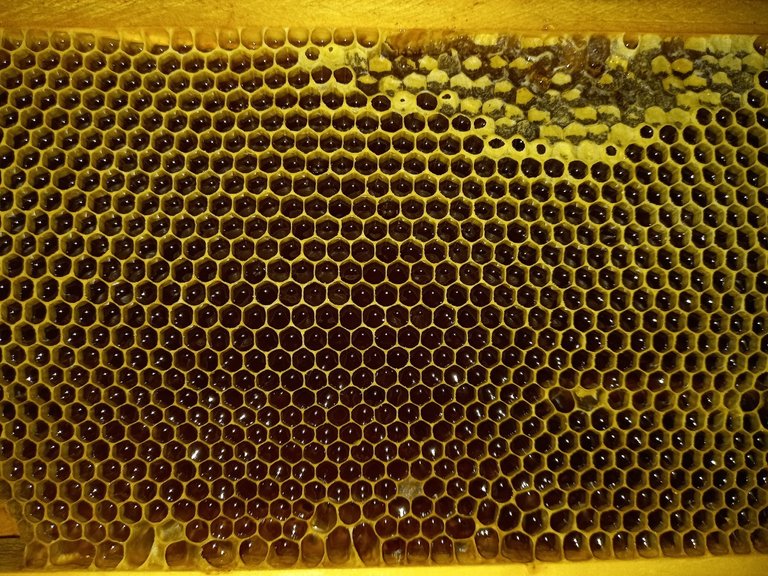
Alternative Methods
An extractor is not essential to get the honey out of comb. Alternative methods include:
Cut Comb: the comb is cut into round or square pieces and used as is.[7]
Crush and Strain: the comb is cut out, crushed in a container and then strained through cheesecloth or another filtering system to separate the honey from the wax.[7]
Chunk Honey: this is a hybrid between the two: the comb is cut and put in a container and then the rest of the space is filled with honey extracted by another method.[7]
Flow Hive is a beehive designed to allow honey to be extracted simply by turning a lever: the hive does not have to be opened and the bees are not disturbed as in normal extraction.[8] [9] Check out that sweet article here as per Wikipedia.org https://en.wikipedia.org/wiki/Honey_extractor
Here we have a view of a few frames laden with capped honey ready to be uncapped and processed.
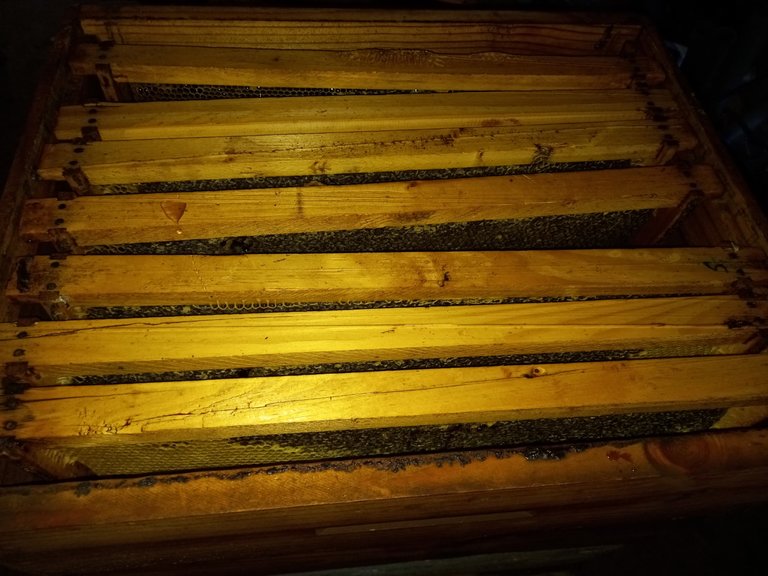
Nature the incredible!
Love and light, may you be abundantly blessed and have an amazing Saturday!
Cheer$;)
Love that you get help cleaning from the bees!
@tipu curate
Upvoted 👌 (Mana: 98/112) Liquid rewards.
Heheh thanks so much really appreciate that .. Cheer$;P
Yay thanks so much. Cheer$;P
Congratulations, your post has been selected to be included in my weekly Sustainability Curation Digest for the Minnow Support Project.
Stunning bruv long time are you well? Thanks a ton. Cheer$;)